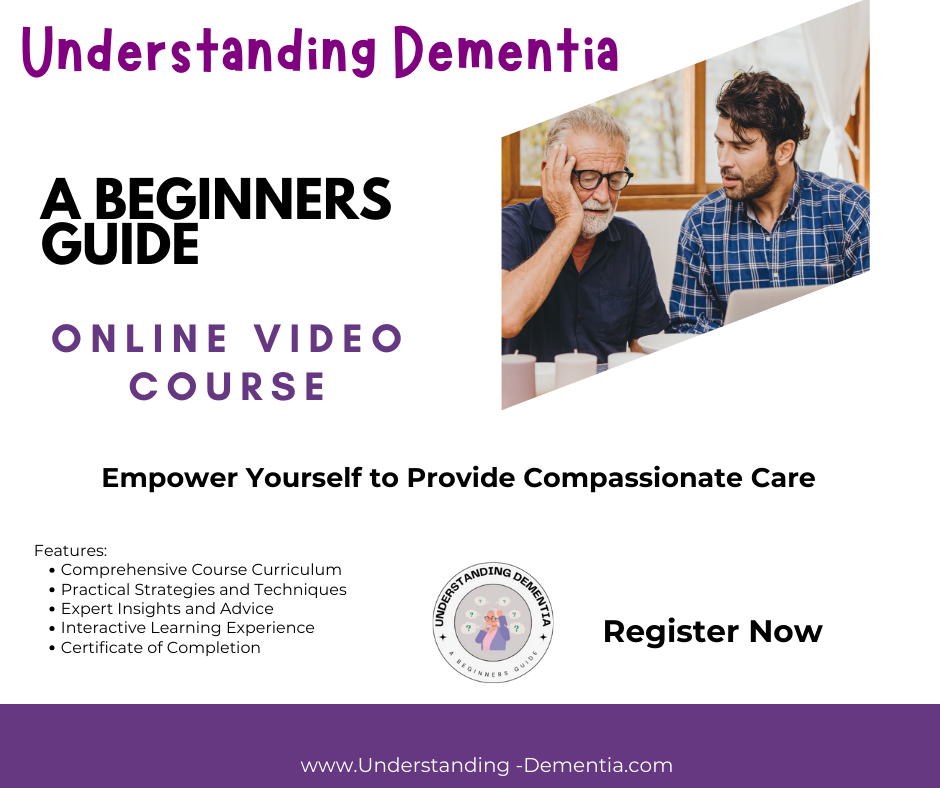Caring for a loved one with dementia can be an emotionally challenging journey, especially when they experience agitation and anxiety. These behaviors are common, but that doesn’t make them any easier to handle. Understanding why they happen and learning how to cope can make a huge difference for both you and your loved one. Let’s explore how to manage agitation and anxiety in dementia care and help you feel more equipped to navigate this difficult part of caregiving.

Understanding Agitation and Anxiety in Dementia
What are Agitation and Anxiety in Dementia? Agitation refers to behaviors like restlessness, pacing, and sudden outbursts, while anxiety is characterized by feelings of unease, worry, or fear. For someone with dementia, these symptoms can often arise suddenly, with little warning, and may be difficult to understand.
Examples of Anxiety and Agitation:
- Agitation: A loved one may begin to pace around the room, mutter to themselves, or raise their voice suddenly, even if nothing appears to be wrong.
- Anxiety: Your loved one may start to wring their hands, ask the same question repeatedly, or show signs of distress, like a racing heart or sweating, when they feel unsure of their surroundings or the people around them.
Why Do These Symptoms Happen? The changes in the brain due to dementia can cause confusion, frustration, and fear. A person may not understand where they are, who is around them, or why they feel a certain way. This can result in agitation and anxiety. Environmental stressors, like loud noises or too many people, can also trigger these behaviors.

Anxiety & Agitation in Different Stages of Dementia
As dementia progresses, anxiety and agitation may manifest in different ways depending on the stage of the disease. It’s important to recognize how these behaviors might evolve, so you can adjust your caregiving approach accordingly.
-
Early Stage:
In the early stage of dementia, anxiety and agitation may stem from confusion and frustration. Your loved one might become anxious about not remembering certain things or recognizing familiar faces. Agitation could occur if they feel embarrassed or confused by their own forgetfulness. For example, they might become frustrated if they can’t recall where they left their keys or get upset when they forget a name.
Example: A person in the early stages may repeatedly ask questions about the time of day or where someone is going, showing signs of anxiety about their memory loss. They may also get agitated when their environment changes unexpectedly.
-
Middle Stage:
As dementia progresses to the middle stage, anxiety and agitation can become more frequent. Your loved one may not understand why they’re confused, leading to feelings of fear or frustration. They may become agitated if they feel lost or disoriented, especially in unfamiliar places. At this stage, individuals may also experience changes in mood, such as sudden bursts of anger or sadness.
Example: A middle-stage dementia patient may express anxiety about being alone or refuse to leave the house due to fear of getting lost. They may become agitated if they perceive that something is wrong but can’t articulate what it is.
-
Late Stage:
In the late stages of dementia, individuals may lose the ability to communicate verbally, but anxiety and agitation can still be present. They may become agitated due to physical discomfort, fear of unfamiliar faces, or the inability to understand what’s happening around them. At this stage, their behavior may become more nonverbal, including restlessness, pulling away from touch, or sudden crying.
Example: A person in the late stage of dementia may appear agitated when being moved or touched, showing signs of discomfort or distress even if they can’t verbalize the cause. Their anxiety may arise from changes in their caregivers or environment, leading to further confusion.
Understanding these differences in behavior is crucial for adjusting your caregiving approach at each stage. Learn more about dementia stages and how to navigate them in my blog post, “How to Navigate the Different Stages of Dementia”.

Impact of Agitation and Anxiety on the Person with Dementia
When a loved one experiences agitation or anxiety, they may feel scared or frustrated. For example, if a person with dementia becomes anxious in a new setting, they might show signs of distress, like shouting or trying to escape. This can be hard for both the person with dementia and the caregiver, as the individual may not be able to articulate their discomfort.
Example: If your loved one feels anxious in a doctor’s office, they might become irritable or agitated, refusing to sit down or becoming upset by unfamiliar faces or noises. The agitation can stem from their inability to understand why they’re there, causing them to feel unsettled and out of control.
These behaviors can affect their quality of life, making it harder for them to feel safe or secure in their environment. Understanding the root causes can help you address their needs with more compassion. You can learn more about managing dementia-related behaviors in my post “Top 10 Dementia Behaviors Every Caregiver Should Know About”

Impact on Caregivers
As caregivers, managing agitation and anxiety can be overwhelming. It’s easy to feel helpless or frustrated when you can’t find a way to calm your loved one. Agitation and anxiety can lead to caregiver burnout if not properly managed, causing physical and emotional exhaustion.
Example: When a caregiver spends hours trying to calm a loved one who is pacing or upset, it can take a toll on their own well-being. The repeated attempts to soothe their loved one without success can cause feelings of frustration and exhaustion. That’s why it’s so important for caregivers to practice self-care and recognize when they need help. You can learn more about preventing caregiver burnout in my post, “Find Out How to Prevent Dementia Caregiver Burnout Before It’s Too Late”.

Understanding Dementia Leads to More Patience
One of the most effective ways to cope with anxiety and agitation in dementia care is by developing a deeper understanding of the disease. The more you learn about dementia, the more you will understand the behaviors you’re witnessing and why they occur. This knowledge helps you respond with more patience and compassion, instead of frustration.
For example, understanding that agitation might stem from confusion, fear, or discomfort allows you to adjust your expectations and approach. When you recognize that your loved one isn’t intentionally being difficult, but rather experiencing a symptom of their illness, it becomes easier to respond with empathy.
Taking the time to educate yourself about dementia can improve your caregiving experience and reduce your stress. To help you get started, consider joining my Understanding Dementia course, which provides in-depth insights and strategies for dealing with the challenges of dementia care. Learn more about the Understanding Dementia course here.

Coping Strategies for Managing Agitation and Anxiety
Here are some strategies to help manage agitation and anxiety:
-
Create a Calm Environment:
A peaceful, quiet environment can help reduce agitation. For example, if your loved one gets anxious in a busy room, try moving them to a quieter space with soft lighting. Reducing clutter and noise can also help them feel more at ease.
Example: If your loved one becomes anxious when too many people are around, consider limiting visitors or speaking softly to reduce the stress of a loud environment.
-
Use a Routine:
People with dementia often feel more comfortable with a set routine. Keeping their daily schedule predictable helps reduce uncertainty and anxiety. For example, if they know that meals happen at the same time each day, it can create a sense of stability. You can also read more about how to use routine to create calm in my blog post, “From Chaos to Calm: How to Use Routine in Dementia Care”.
Example: If your loved one experiences anxiety before bed, a bedtime routine like playing calming music or reading a familiar book can signal that it’s time to wind down and reduce their stress.
-
Communication Techniques:
Speak slowly, calmly, and clearly when addressing your loved one. Keep your sentences simple and to the point. Instead of saying, “Let’s go take a shower,” try “It’s time for your bath now.” This minimizes confusion.
Example: If your loved one becomes agitated when getting ready for an appointment, try saying, “It’s time to get ready for your doctor. Let’s get your shoes on.” Avoiding complex explanations helps them understand and reduces their anxiety.
-
De-escalation Techniques:
When agitation begins, try to redirect your loved one’s attention to something else. For instance, if they are pacing and seem upset, you might suggest going for a walk together, or offering a favorite activity, like looking at photo albums.
Example: If your loved one becomes agitated about a loud noise outside, calmly suggest, “Let’s sit in the living room where it’s quieter. How about we look at some photos of the family?” This distraction can help calm their anxiety.
-
Physical Touch:
Sometimes, a gentle touch can be reassuring. If your loved one is feeling anxious, holding their hand or giving them a soft hug may help calm them. Just make sure that it’s something they’re comfortable with.
Example: When your loved one is upset or anxious, offering a gentle pat on the back or holding their hand might provide them with comfort and reduce feelings of fear.
-
Engage in Calming Activities:
Try soothing activities like listening to soft music, watching a familiar TV show, or engaging in a favorite hobby. For example, playing a song they enjoy can sometimes ease anxiety and help them feel more relaxed.
Example: If your loved one enjoys gardening, bringing them outside to plant a few flowers might help shift their focus and provide calming relief from their agitation.
-
Medication:
In some cases, medication may be necessary to manage severe agitation or anxiety. Work with a doctor to explore options that might be helpful, but remember that medication should always be used as a last resort after other strategies are tried.

Self-Care for Caregivers
Caring for someone with dementia can be all-consuming, but it’s important to remember that you need care too. Taking time for yourself is crucial in preventing burnout.
-
Take Regular Breaks:
Even short breaks can recharge you. If possible, enlist help from family, friends, or a professional caregiver. A brief respite can make all the difference in how you handle tough moments.
Example: Ask a trusted friend or family member to help for an hour so you can go for a walk or enjoy a quiet moment by yourself. This time can be crucial for recharging and reducing your own stress.
-
Recognize the Signs of Burnout:
If you find yourself feeling overwhelmed, frustrated, or exhausted all the time, it may be a sign of burnout. Take a moment to check in with yourself and ask for support when needed.
- Join a Support Group: Connecting with other caregivers can be incredibly helpful. They can share their experiences and coping strategies, and you can provide support to one another. Consider joining a local caregiver group or an online community.
You can also read more about preventing caregiver burnout in my blog post, “Find Out How to Prevent Dementia Caregiver Burnout Before It’s Too Late”.
When to Seek Professional Help
If your loved one’s agitation or anxiety becomes frequent, severe, or difficult to manage, it may be time to seek professional help. A healthcare provider can assess the situation and suggest ways to improve the care plan. In some cases, therapies like music therapy or cognitive behavioral therapy may help reduce anxiety and improve overall well-being.
Conclusion
Dealing with agitation and anxiety in dementia care is never easy, but by understanding the causes and practicing patience, you can manage these behaviors more effectively. Remember to take care of yourself along the way, and don’t be afraid to seek help when needed. You are not alone in this journey.









0 Comments